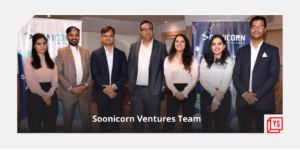My discussion with several entrepreneurs and operators regarding the opportunity in Indian consumer tech has evoked emotions across the spectrum.
For the naysayers, it reminded me of the proverb “Is the glass half full or half empty?”, and we decided to partner with BCG to share our viewpoint with budding entrepreneurs as they explore opportunities to build new businesses.
These are the highlights from our report, “Digitizing Consumers in India (DCII)”:
A. Macro – The big picture
- In the next 5-10 years, India’s economy is projected to grow by $3.5 trillion, which is equivalent to the amount added since its independence 75 years ago
- China embarked on a similar trajectory starting 2007 when its GDP was $3.5 trillion, reaching $18 trillion in 2022 (5x in 15 years!)
- This growth in India is expected to result in a remarkable surge in per-capita income, leading to an increase in discretionary spending that has not been witnessed in the past
- The pandemic accelerated digital penetration by 12–24 months across different sectors, thereby boosting the adoption of ecommerce. Ecommerce penetration will further increase and 350-400 million shoppers are expected to shop online by 2025
- India’s consumer tech sector has already demonstrated early successes, with over 40 unicorns creating a value of more than $250 billion
This presents a unique opportunity for entrepreneurs to tap into a rapidly growing market and contribute to the country’s economic growth while solving real-world problems.
B. Emerging trends and opportunities
- Democratisation of online commerce with a large proportion of new shoppers being 35+ years old, women, and from Tier II+ cities
- Increasing relevance of omni-channel with 6–8X growth in digitally influenced retail spending, reaching $207 million in 2021 from Rs 2 billion six years ago
- ~1.8x increase in time spent online by consumers on social media and photo/video apps in the last three years, leading to these channels becoming important for ecommerce with the emergence of discovery led shopping and social commerce
- Marketplaces are overtaking search engines as new search sites with 35–40% consumers choosing marketplaces for searches in select user categories, such as electronics, fashion, mobile, food & FMCG, and beauty and personal care
- Consumers are seeking quicker gratification with shorter delivery options, leading to the emergence of Q-commerce, which has rapidly increased to 25–30% of the overall online grocery market
- New commerce models such as assisted and conversational commerce, influencer commerce, live/video commerce, and group buying could provide an impetus to existing and new shoppers
- Shift in consumer preferences towards healthier lifestyle choices, sustainability and re-commerce
- Rise of emerging technologies such as generative AI could have multiple potential applications in ecommerce (e.g., automating product descriptions, personalized marketing content, assortment planning etc.); ONDC could provide a further fillip to e-commerce penetration
Entrepreneurs should think about differentiation across three vectors as they ideate and develop new ideas:
- New consumers – they are older, more women, lower income, and from smaller towns.
- New categories – the next wave of growth is likely to be driven by emerging categories such as furniture and home décor, beauty and personal care, food and beverages, etc.
- New channels/ formats – omni-channel journeys across offline EBO/ MBO, q-commerce, influencer / live storefronts, marketplaces, affiliates, and D2C stores.
C. Best practices – Learnings from the best
We spoke to successful entrepreneurs and CXOs across the consumer tech landscape and captured key insights and learnings from their journeys that helped them succeed. These serve as a ready reckoner for anyone thinking about starting up or scaling their existing business.
Scaling startups from 0–to–1 and 1-to-10
- Identifying unmet customer need, pain-points, or friction in existing offerings to create a disruptive consumer proposition
- Making the right choices across pricing, optimizing unit economics and customer acquisition costs
- Building the supply side as a potential competitive moat through deep partnerships and capability build
- Internalising the test and learn philosophy for quicker iterations and faster route to product market fit
Driving sustainable growth in 10–100 phase
1. Sources of next wave of growth
- Maximising customer lifetime value by expanding offerings, driving loyalty through customer retention, and focusing on cross-sell/up-sell
- Expanding distribution across channels and geographies to target new customer archetypes
- Evaluating international markets for entry
2. Optimising profitability
- Driving path to profitability in key levers, e.g., customer acquisition costs
3. Capability building for scale
- Unlocking founder bandwidth to focus on strategic goals via organisational build-up
- Harnessing the power of AI and analytics across the value chain
“Is the glass half full or half empty?”. It will continue to be half empty if one continues to focus on missed opportunities from the past. I strongly believe that this is India’s decade and there are enough reasons to be excited about the large opportunity in Indian consumer tech.
(Disclaimer: The views and opinions expressed in this article are those of the author and do not necessarily reflect the views of YourStory.)


![Read more about the article [Startup Bharat] How Bhubaneswar-based Impact Health is looking to disrupt end-to-end healthcare with tech and logistics](https://blog.digitalsevaa.com/wp-content/uploads/2021/06/image1-1624339821693-300x150.jpg)







